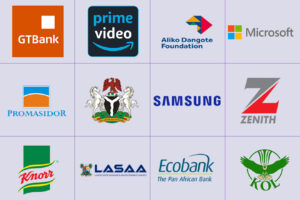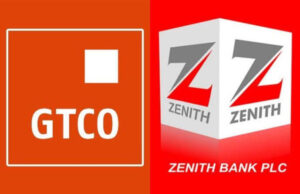Building a memorable brand in Nigeria’s crowded market isn’t just about having a logo or catchy slogan; it’s about crafting a consistent, compelling identity that reflects purpose and earns trust. Yet, many entrepreneurs still underestimate the power of strategic branding, relying instead on generic visuals and inconsistent messaging that fail to connect with their audience.
In today’s fast-evolving consumer landscape, brand identity is no longer optional, it’s foundational. It shapes how people perceive your business, how they talk about it, and whether they stay loyal. For Nigerian entrepreneurs looking to compete, grow, and stay relevant, mastering a few high-impact brand identity tricks can unlock stronger recognition, customer loyalty, and long-term business equity.
Why Brand Identity Can Make or Break Nigerian Startups
The reality is that many local startups launch with strong ambition but little brand clarity. Without a well-defined identity, even the most innovative product can get lost in a sea of sameness. Consumers want more than functionality, they want meaning, authenticity, and a brand they can proudly support. That’s where smart identity-building moves in.
1. Purpose-Driven Brand Storytelling
A strong brand identity doesn’t start with design, it starts with meaning. Once Nigerian entrepreneurs begin to move beyond colors and logos, the next step is building a brand story that connects deeply with their audience. This is where purpose-driven branding becomes one of the most powerful brand identity tricks available today.
Consumers in Nigeria are increasingly value-conscious. They support brands that speak to their realities, represent their aspirations, and reflect a greater sense of mission. A compelling brand storytelling approach goes beyond what you sell to why it matters. It invites customers into a bigger narrative, one rooted in social relevance, emotional truth, and shared purpose.
Slice Media has helped clients turn this theory into tangible results. A great example is the GTCO “A Slice of Orange” campaign, where culture, identity, and community were central to the messaging. That kind of emotionally resonant storytelling builds not just recognition, but real advocacy.
To get it right, founders should start with internal discovery: workshops to uncover core values, purpose, and authentic origin stories. From there, it’s about developing a Brand Story Framework that aligns this purpose with customer benefits, and then sharing it consistently across every brand touchpoint. This isn’t just one of many branding tips; it’s the heartbeat of a memorable identity.
2. Executive & Founder Thought Leadership Positioning
Once your brand story is clear and purpose-driven, the next step is ensuring that it’s championed by the right voices. This is where executive positioning plays a crucial role. In Nigeria’s competitive business climate, customers and stakeholders are more likely to trust brands with visible, credible leadership. When founders and senior executives become the face of a movement, not just the heads of a business, it builds trust and boosts brand equity.
Thought leadership is one of the most overlooked yet high-leverage branding tips available to entrepreneurs. Through keynote speaking, press features, and founder-led content, leaders can humanize their brand and communicate its values in an authentic, authoritative voice. Whether it’s an inspiring post on LinkedIn or a panel session at a tech summit, visibility adds weight to the brand’s story and deepens the connection with target audiences.
Slice Media’s Founder Coaching program is tailored to help entrepreneurs shape and sharpen their public presence. From building a strategic content calendar to preparing for high-profile speaking engagements, the program equips leaders to amplify their brand in a way that supports the overall business strategy.
Consistent thought leadership doesn’t just elevate individuals, it reinforces the brand’s identity. When leadership branding aligns with purpose, it becomes one of the smartest brand identity tricks for long-term credibility and influence.
In fact, the recent overhaul of NNPC’s executive leadership under President Tinubu highlights just how essential visible, strategic leadership has become in Nigeria’s corporate landscape. With Bayo Ojulari now leading the national oil company, the move signals not just operational reform, but a calculated repositioning of the organization’s public image and trust equity. Entrepreneurs and corporate leaders alike can take a cue: clear, credible leadership is not just about governance, it’s about brand stewardship. Those who manage their personal brand with intention are often the ones who earn lasting influence and customer loyalty.
3. Culturally-Infused Visual Identity Design
Once your leadership is visibly aligned with your brand’s purpose, the next challenge is making your business instantly recognizable across every touchpoint. This is where a strong brand visual identity grounded in cultural relevance becomes essential. In a diverse country like Nigeria, design that speaks the local language, visually, can unlock trust and brand loyalty in ways that generic templates never will.
Logo design is only one part of the puzzle. The entire visual system, colors, typography, icons, and layouts, should reflect a cultural story. Nigerian patterns, textures, and symbolism aren’t just decorative; they serve as strategic tools in cultural branding that help your brand stand out while feeling familiar to your audience. Brands that thoughtfully weave in these elements earn more than attention, they earn belonging.
Slice Media excels in helping brands shape culturally resonant identities, often beginning with deep design research into local motifs and color associations. For example, “Eko greens” may evoke freshness and urban vibrance, while Nok earth tones can anchor a brand in heritage and authenticity. From there, we build out our full Brand Guidelines to ensure consistency across digital assets, packaging, and even large-scale OOH formats.
For entrepreneurs, this is one of the most overlooked yet high-reward brand identity tricks. When your visual identity honors the culture of the people you serve, it becomes more than branding, it becomes a connection.
4. Packaging & Print Excellence for Product Brands
After establishing a culturally rooted visual identity, product-based brands must ensure that their physical presence reinforces that same story. For many Nigerian businesses, especially in FMCG and retail, packaging design is the frontline of brand experience. It’s where perception begins and decisions are made, often in seconds. In a saturated market, exceptional packaging doesn’t just protect the product, it drives conversion.
Product branding at the shelf level must be strategic. Design, structure, and material all contribute to shelf appeal, and when done right, packaging becomes an extension of the brand’s promise. A thoughtfully designed pack tells customers what your brand values before they even interact with your product. Details like typography, sustainability markers, and texture influence both purchase intent and brand perception.
Slice Media works with brands to develop packaging that resonates with Nigerian consumers, from eco-conscious sachets to premium boxed formats. Our design process includes material sourcing, collaboration with local printers, and field testing through limited-edition runs. We align packaging design with purpose, ensuring logos, taglines, and storytelling elements are seamlessly embedded into the structure, not just applied as decoration.
This is one of those brand identity tricks that delivers tangible results. Great packaging doesn’t just sit on the shelf; it speaks, persuades, and invites the customer into your world. For entrepreneurs looking for actionable branding tips, packaging is a powerful place to invest.
5. Experiential Out-of-Home (OOH) & Ambient Activations
Once product packaging is optimized to reflect your brand story, the next opportunity is expanding that story into public spaces. Experiential branding allows Nigerian entrepreneurs to turn everyday environments into memorable brand encounters. Through creative OOH advertising and smart ambient marketing, brands can engage people where they live, work, and commute, sparking conversation, curiosity, and loyalty.
In high-traffic cities like Lagos, Abuja, and Port Harcourt, static ads no longer hold attention on their own. Forward-thinking brands are creating immersive experiences: interactive billboards, mobile activations, and public installations that blend storytelling with participation. These moments deepen brand connection and often become shareable content, driving reach beyond the physical location.
Slice Media has executed several standout OOH campaigns that bridge storytelling with real-world engagement. We help brands map out high-performing locations, develop creative strategies, and integrate digital touchpoints, like QR codes and AR filters, to create a seamless experience across offline and online channels. It’s not just about visibility; it’s about interaction and presence.
For entrepreneurs, this is one of the boldest yet rewarding brand identity tricks, especially when paired with earlier branding tips like visual identity and packaging. When a brand shows up creatively in public space, it demonstrates confidence, clarity, and cultural relevance.
6. Data-Driven Digital Positioning & Content Activation
After creating strong brand moments in physical spaces, the next step is reinforcing that identity in the digital world, where most consumers now spend their time. Effective digital brand positioning relies on understanding your audience at a granular level and speaking to them with precision. Without data, even the most creative content risks becoming noise.
Content marketing in Nigeria has grown beyond general awareness tactics. Today, businesses must use audience insights, real-time analytics, and behavioral data to craft content that resonates with specific customer segments. Whether you’re targeting Gen Z entrepreneurs in Lagos or working professionals in Enugu, personalization is key to engagement and conversion.
Slice Media works with clients to craft data-driven branding strategies that align with brand objectives. From defining KPIs to social listening, we help brands spot trends, uncover content gaps, and identify where their message will land best. Campaigns are tested through A/B variations on platforms like Instagram, Facebook, and LinkedIn, with insights looped back into strategy for continuous improvement.
This kind of adaptive thinking is one of the most essential branding tips in today’s marketing landscape. Entrepreneurs who embrace data aren’t just following trends, they’re shaping them. When your digital strategy is guided by insight rather than guesswork, you ensure every piece of content actively supports your broader brand identity, tricks, and storytelling framework.
Frequently Asked Questions
- How long does it take to develop a new brand identity?
Developing a strategic brand identity isn’t a weekend task. A comprehensive process, covering research, brand storytelling, design, content systems, and rollout, typically takes 8 to 12 weeks. This timeline allows for workshops, stakeholder alignment, creative development, and revisions. At Slice Media, we use a phased methodology to ensure each brand element is purpose-built and contextually relevant to Nigeria’s fast-evolving market. - What is the cost of comprehensive brand positioning services?
Pricing depends on the depth of services. A full-scale project may include strategy development, logo design, packaging systems, OOH advertising, digital content, and more, ranging from ₦3 million to ₦15 million. Slice Media tailors every proposal based on client goals and growth stage, ensuring both startups and established enterprises access scalable, high-quality solutions. - How can we measure the effectiveness of our brand identity?
Results can be tracked using both qualitative and quantitative metrics. These include brand recall surveys, sentiment analysis, social media engagement, web traffic sources, and revenue growth post-launch. Effective branding tips tie measurement to clear objectives, whether it’s increasing awareness, shifting perception, or boosting conversions. - Can small businesses in Nigeria afford these branding strategies?
Yes. Many of these brand identity tricks, such as thought leadership and purpose-led storytelling, don’t require a massive budget to be effective. Slice Media offers modular services that let entrepreneurs build from core essentials and expand over time. What matters most is strategic clarity, not scale.
Conclusion
Brand identity has become a vital differentiator. Entrepreneurs who treat branding as strategy, not just design, are the ones earning customer trust, growing faster, and staying top of mind. From purpose-driven storytelling to data-informed digital positioning, each tactic explored here offers a unique way to build a brand that resonates.
What makes these branding tips especially powerful is how they reflect real business challenges in Nigeria, from navigating culture and consumer behavior to breaking through market noise. These are not generic ideas, they’re proven brand identity tricks grounded in local insight and executed through expertise.
At Slice Media, we don’t believe in off-the-shelf branding. Our work blends storytelling, design, digital insight, and creative execution to build brands that win hearts and market share. Whether you’re launching a startup or evolving an established business, your identity should work as hard as you do.
Ready to reposition, reimagine, or relaunch your brand? Contact Slice Media Limited to create a branding roadmap tailored for Nigeria’s unique business environment. Let’s turn your vision into something unforgettable.




